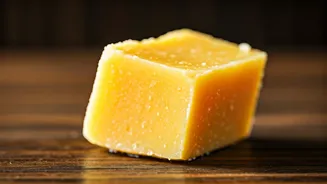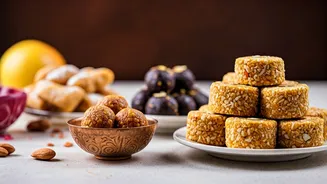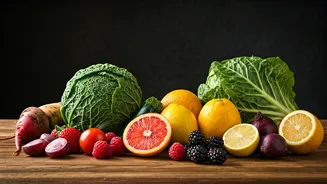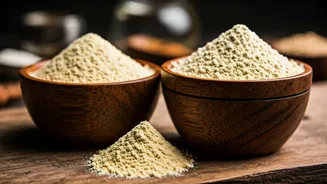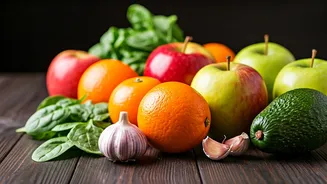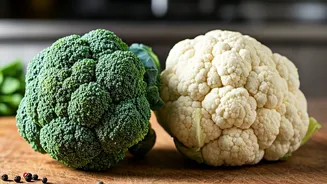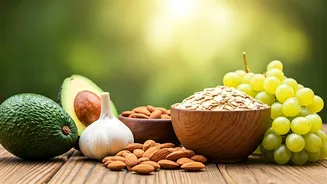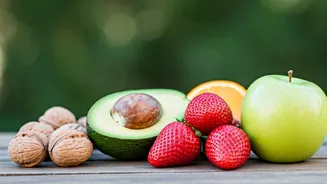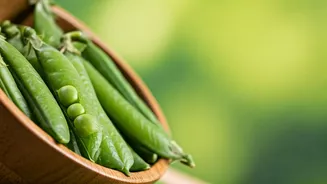Ghee: A Deep Dive
Ghee, essentially pure butterfat, is created by simmering butter until the water evaporates and milk solids separate. This process not only concentrates
the flavor but also increases the smoke point, making it suitable for high-heat cooking. In Indian culture, ghee is often associated with auspicious occasions and is believed to have various health benefits. However, despite these perceptions, ghee primarily consists of fats, including saturated fat, and while it contains some fat-soluble vitamins like A, D, E, and K, its high-fat content necessitates careful consideration within a balanced diet. Moreover, the production process removes lactose and casein, which are proteins found in milk, making ghee suitable for individuals with dairy sensitivities. The clarity of ghee and its nutty flavor profile are important factors for its usage in cooking and Ayurvedic practices.
Fat Content Matters
The significant fat content of ghee raises important considerations. While fats are essential for various bodily functions, including hormone production and nutrient absorption, excessive intake, especially of saturated fats, can have adverse effects. One of the main concerns is the impact on cholesterol levels. Saturated fats can increase LDL (low-density lipoprotein) cholesterol, often referred to as 'bad' cholesterol, potentially increasing the risk of heart disease. Furthermore, the high-calorie density of ghee can contribute to weight gain if consumption exceeds the body's energy needs. This can lead to other health complications associated with obesity, like type 2 diabetes and hypertension. Therefore, monitoring portion sizes and integrating ghee into a diet balanced with other fats and nutrients is crucial for maintaining overall health. The balance of the diet plays a vital role, including incorporating unsaturated fats from sources like nuts, seeds, and avocados.
Portion Control is Key
The key to enjoying ghee's benefits while minimizing potential risks lies in portion control. Since ghee is calorie-dense, overconsumption can lead to weight gain, making it essential to be mindful of serving sizes. A general guideline is to use ghee sparingly, treating it as a flavorful addition rather than a primary cooking fat. This means using just enough to impart flavor or prevent sticking while cooking. It is also important to consider the overall dietary context. If the rest of the diet is high in fats or calories, reducing the amount of ghee consumed can help maintain a healthy balance. Furthermore, paying attention to how the body feels after consuming ghee can provide useful insights. If individuals experience digestive discomfort or other adverse effects, they should reduce their intake. Consulting a nutritionist or a healthcare provider for personalized recommendations based on individual health needs and activity levels is also advised.
Ghee's Nutritional Profile
Beyond its fat content, ghee also offers some nutritional benefits. It is a source of fat-soluble vitamins, notably vitamin A, which supports vision and immune function, and vitamin E, an antioxidant that protects cells from damage. The clarified nature of ghee makes it lactose and casein-free, making it suitable for some people with dairy sensitivities. Ghee also contains conjugated linoleic acid (CLA), a fatty acid that has been linked to various health benefits, including improved metabolism and reduced inflammation. However, these beneficial aspects do not negate the need for moderation. The benefits are best realized when ghee is part of a balanced diet with a variety of nutrient-rich foods, including fruits, vegetables, lean proteins, and whole grains. Relying solely on ghee for essential nutrients is not advisable, as it could lead to nutritional imbalances. The nutritional value is best realized by pairing it with other healthy foods.
The Indian Context
In Indian cuisine and culture, ghee holds a special place. It is used in various traditional dishes, sweets, and religious ceremonies. This widespread usage reflects both its flavor-enhancing qualities and its symbolic associations. However, with the increasing awareness of health and wellness, a more balanced approach to ghee consumption is emerging. Many people are still enjoying ghee, but are also becoming conscious of portion control and the importance of a well-rounded diet. The evolving perspectives reflect a broader trend towards making informed food choices that respect cultural traditions while prioritizing health. The goal is to integrate ghee as part of a balanced diet, emphasizing variety, and mindful consumption, acknowledging both its positive qualities and potential health impacts. The cultural aspects also highlight the importance of understanding traditional eating practices and adapting them to modern health principles.
